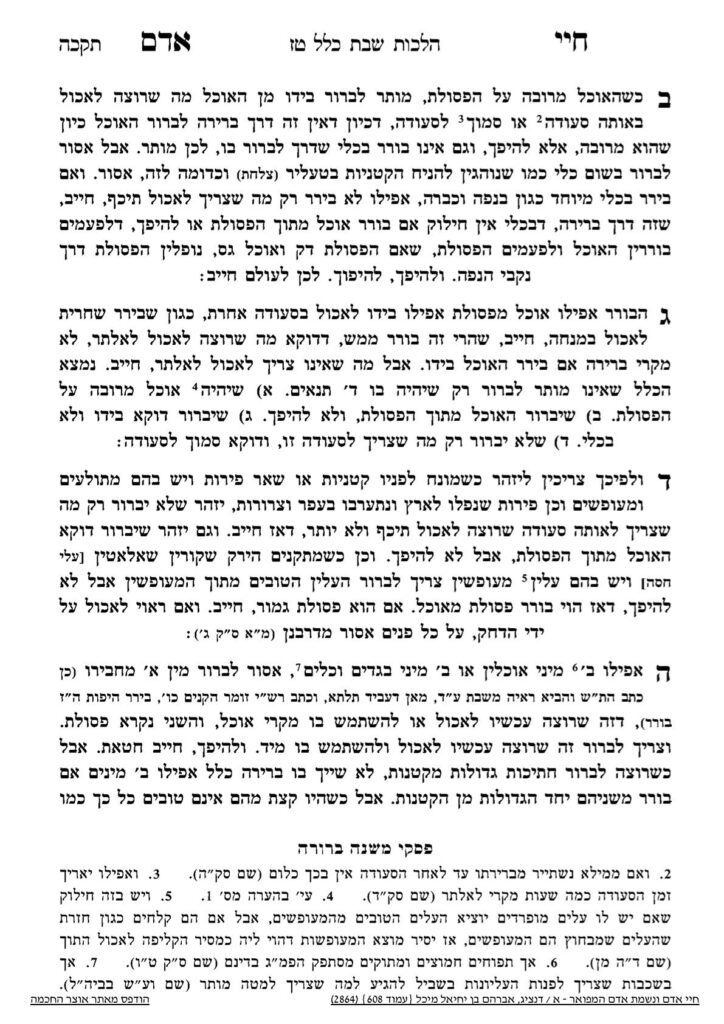We are continuing in siman 3, where we learned about the condition of performing borrer adjacent to the seudah. We learned that adjacent to the seudah includes the amount of time necessary for preparation before the meal, and that time can even be used for preparation of food that will not be necessary until the end of the meal.
Today, we will discuss whether the extension of adjacent to a seudah applies to non-food items as well. We have learned that defining a taaroves is based on multiple factors, including the amount of items, the proximity of the items, the distinctiveness of the items, and the size of the items. Thus, one could have a situation in which, for example, there are many items in proximity to each other, but they are large enough that they do not appear as a taaroves. That being the case, there may be many cases of non-food items in which there is no question of borrer, since there is no taaroves.
An example of this point is seforim. Sometimes, the seforim have clear, bright binding and lettering, and they are neatly on a shelf, such that it is not considered to be within a taaroves at all. However, sometimes the seforim are older, the spine is less clear, and they are not neatly organized. Borrer would apply in such a situation. It similarly could apply to cutlery or plates as well, if they are not organized in a clear and distinct fashion. In such a situation, since there is a concern for borrer, one would only be able to remove what they need, for immediate use.
Regarding the timeframe for immediate use, if one plans to learn for a longer amount of time, and plans to learn different topics, the question is whether we apply the concept of adjacent to the seudah here as well, and any seforim which a person plans to use during their learning session could be taken at the beginning of learning, even if they will not use them until much later.
There is discussion amongst the poskim about this question, and there are opinions in both directions. Some poskim understand that one could take any seforim which would be needed for one topic, even if it will take time until one actually needs them. For example, if one is learning a sugya, they could take a Gemara, Rambam, Rashba, and Shulchan Aruch, even though they may not need the Shulchan Aruch for some time. On the other hand, if they plan to learn chumash after they learn this sugya, they would have to wait until they are ready to begin learning chumash in order to perform borrer on those seforim. They compare learning different parts of the sugya to different courses of a meal, and learning chumash afterwards to a new meal. One should discuss this question with their rav if it is relevant.
Summary
Regarding the criteria that borrer be performed immediately adjacent of the seudah, and the extension that immediately adjacent includes preparation for late parts of the seudah, the poskim differ as to whether this extension is extended to non-food borrer. One should discuss the question with their rav.



